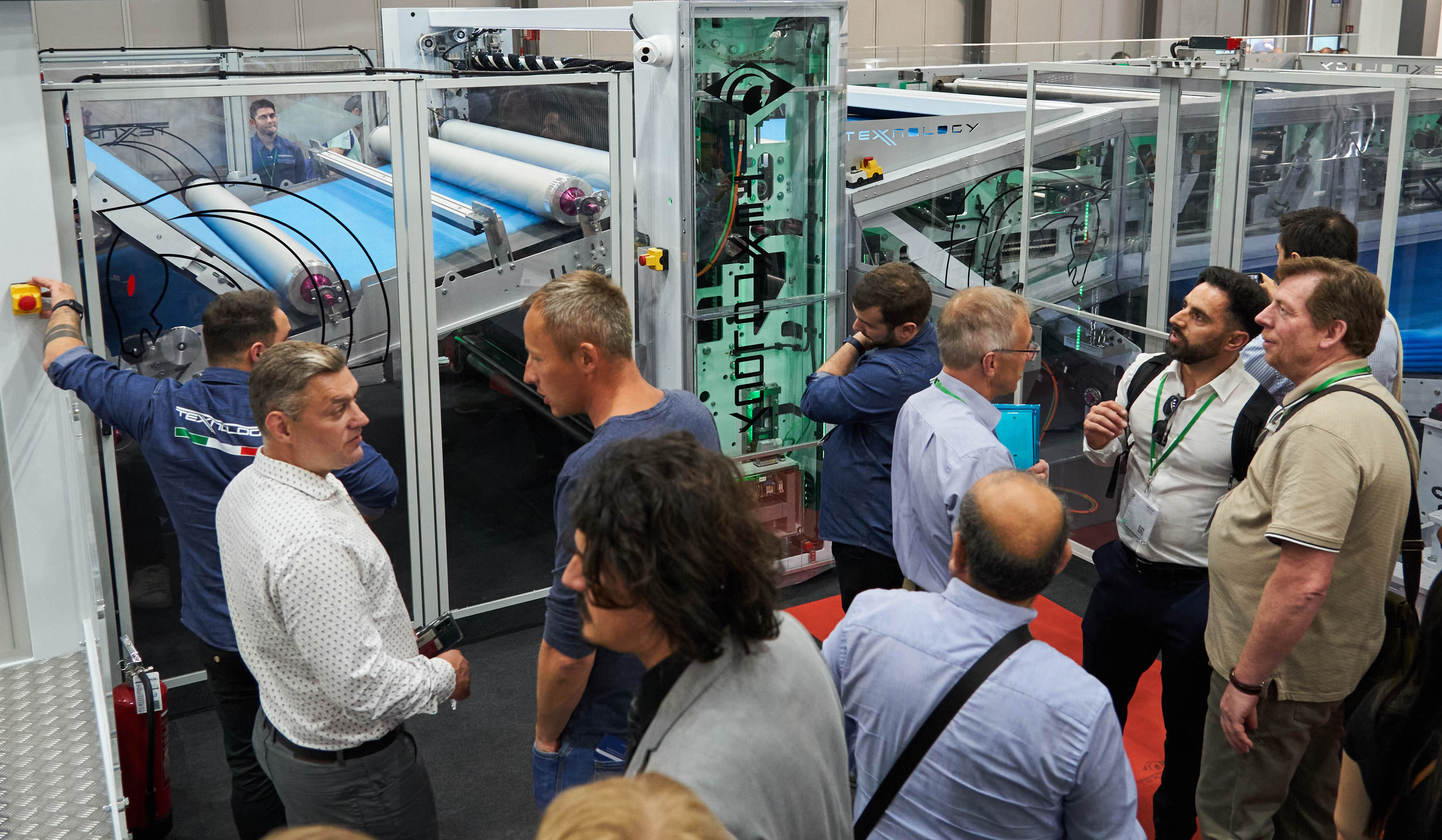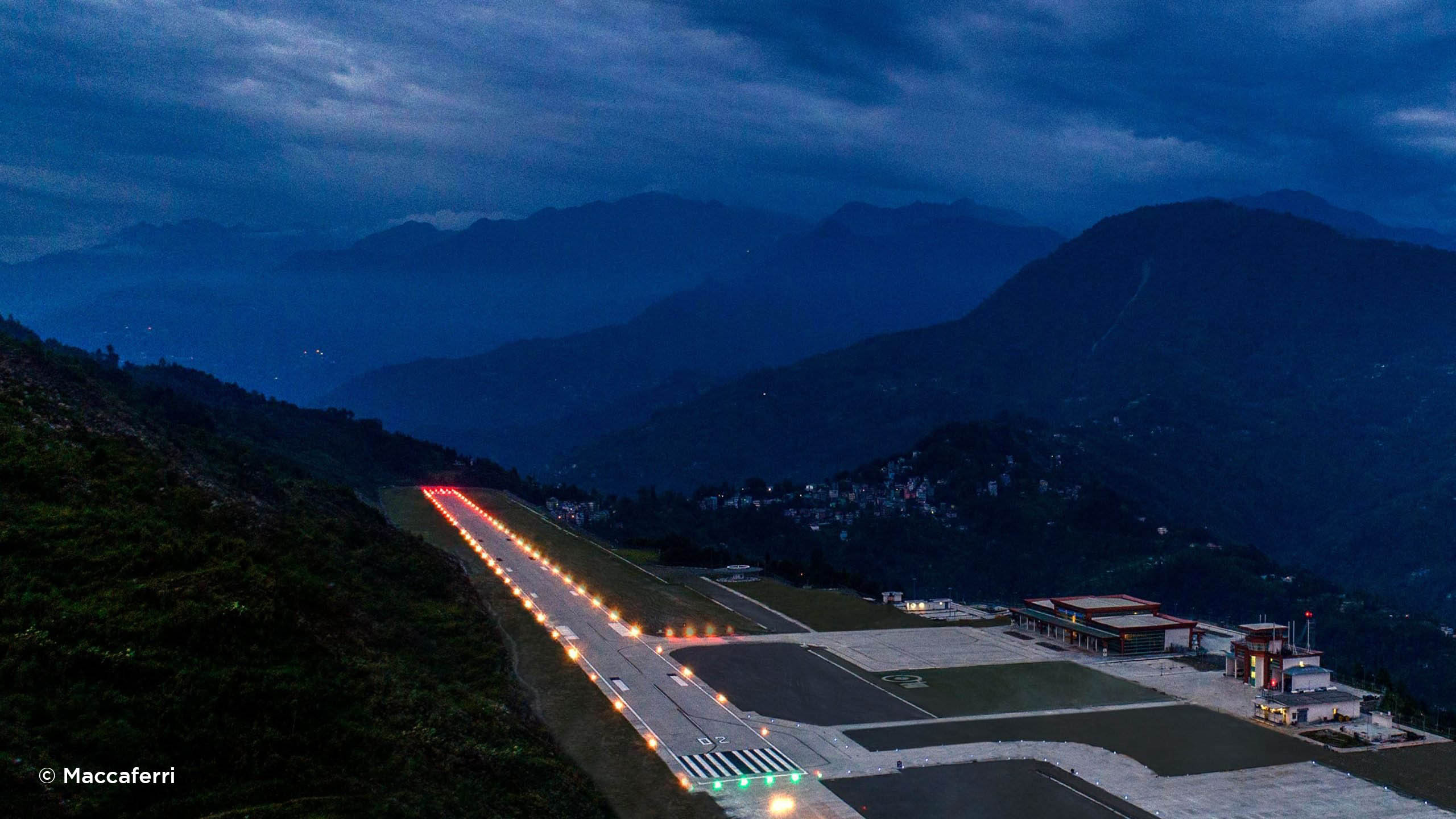2025年10月28-31日 | 新加坡博览中心
Blog
Discover trending topics that are propelling the industry
Technical solutions for infrastructure and environmental sustainability
By Organiser, 3 2月, 2025
The demand for geotextiles and other technical fabrics continues to grow throughout South and South East Asia, where they are employed in infrastructure projects, however far-flung they may be. And there are few places more remote than India’s Pakyong Airport.
Located at a height of over 4,500 feet in Sikkim – the isolated and landlocked Indian state in the Himalayas – Pakyong is well-known for its lush green topography and is also subject to a four-month monsoon period, with heavily weathered ground conditions and a susceptibility to earthquakes. This made the construction of Pakyong Airport far from easy.
From the start it required the full excavation of a mountainside slope with extensive retention structures in which high strength textile geogrids were employed as the primary reinforcement and layers of nonwoven geotextiles were used to provide drainage, secondary reinforcement layers and pipe protection. The airport is now operating regular flights and provides one of the world’s most dramatic locations for take-off and landing.
Urbanisation
Rapid urbanisation and economic growth in India, Bangladesh, Indonesia, Malaysia, the Philippines and Vietnam have led to an increasing demand for durable and sustainable infrastructure and geotextiles are widely used for the soil stabilisation, separation and reinforcement in the construction of highways and railway tracks. These materials serve to enhance the load-bearing capacity of soil, prevent soil mixing with aggregates and extend the lifespan of roads.
Erosion control is another significant application for geotextiles in the region. Coastal erosion and riverbank degradation pose serious challenges, exacerbated by rising sea levels and extreme weather. Geotextiles are now used in the construction of embankments and sea walls to protect vulnerable coastal areas and their filtration properties allow water to pass through them while retaining soil particles, to stabilise slopes and shorelines.
Monsoon seasons further bring heavy rainfall and flooding to many countries in the region and geotextiles are being integrated into flood barriers, drainage systems and water retention structures to help mitigate the adverse effects of these floods.
In countries with extensive agricultural activities such as Vietnam and Thailand, geotextiles also contribute to efficient water management and soil conservation, while rapid population growth has led to increased waste generation in urban centres. Here, technical fabrics are used as liners and covers in landfills to prevent the leachate contamination of groundwater and control gas emissions.
Filter applications
The use of woven and nonwoven as filter media has also been steadily expanding in South and Southeast Asia in areas such as water treatment, air purification, automotive, pharmaceuticals, food and beverage processing, and industrial manufacturing.
Woven filter media are characterised by their durability, reusability and ability to handle high and extensively used in industries like cement, steel and chemical manufacturing, while nonwoven filter media offer advantages such as lightweight high filtration efficiency and cost-effectiveness. The Covid-19 pandemic significantly boosted the demand for nonwoven filter materials in region, particularly for medical applications and personal protective equipment (PPE).
Air quality management is another critical area driving the demand for filter media. Urban centres such as Bangkok, Delhi and Jakarta face severe air pollution challenges, prompting investments in air purification technologies where nonwoven filters are widely used due to their superior particulate capture capabilities.
Impressive growth
Continued investments in infrastructure and environmental sustainability will further fuel the demand for technical materials and especially nonwovens in the growing regions of Asia, as is borne out by the latest figures from ANFA – the Asian Nonwoven Fabrics Association.
These reveal that between 2022 and 2023, the production of nonwovens in the established centres of Japan and Taiwan fell by 8.2% and 2.6% respectively, with only modest growth recorded in South Korea and Indonesia.
For the past decade, China has continued to lead global nonwovens production growth, having added an additional 4.5 million tons of capacity between 2012 and 2023, representing annual growth of 9.4%. This growth, however, slowed to just 2.6% between 2022 and 2023.
By contrast, growth in India between 2022 and 2023 was 25.1% and in all other Asian countries combined, growth was a very impressive 44.5%, reflecting the gradual spread of capacities regionally.

Technologies
The latest advanced technologies for the bonding of nonwoven fabrics for applications such as geotextiles and filter media will be prominently showcased in Hall 2 of the Singapore Expo at ITMA ASIA + CITME this October. This includes high volume needlepunching systems, hydroentanglement machines engineered for fabric consolidation by high pressure water jets, and thermobonding rollers.
The production of a broad range of woven technical fabrics will also be demonstrated within the hall, including both woven filter media and geotextiles, but also airbag fabrics, sophisticated multi-layered products for reinforcing composites and even 3D structures.
At the Singapore exhibition, textile manufacturers in the region will quickly discover that the possibilities for entering new niche markets with technical materials – or even creating entirely new markets – are virtually endless.

















